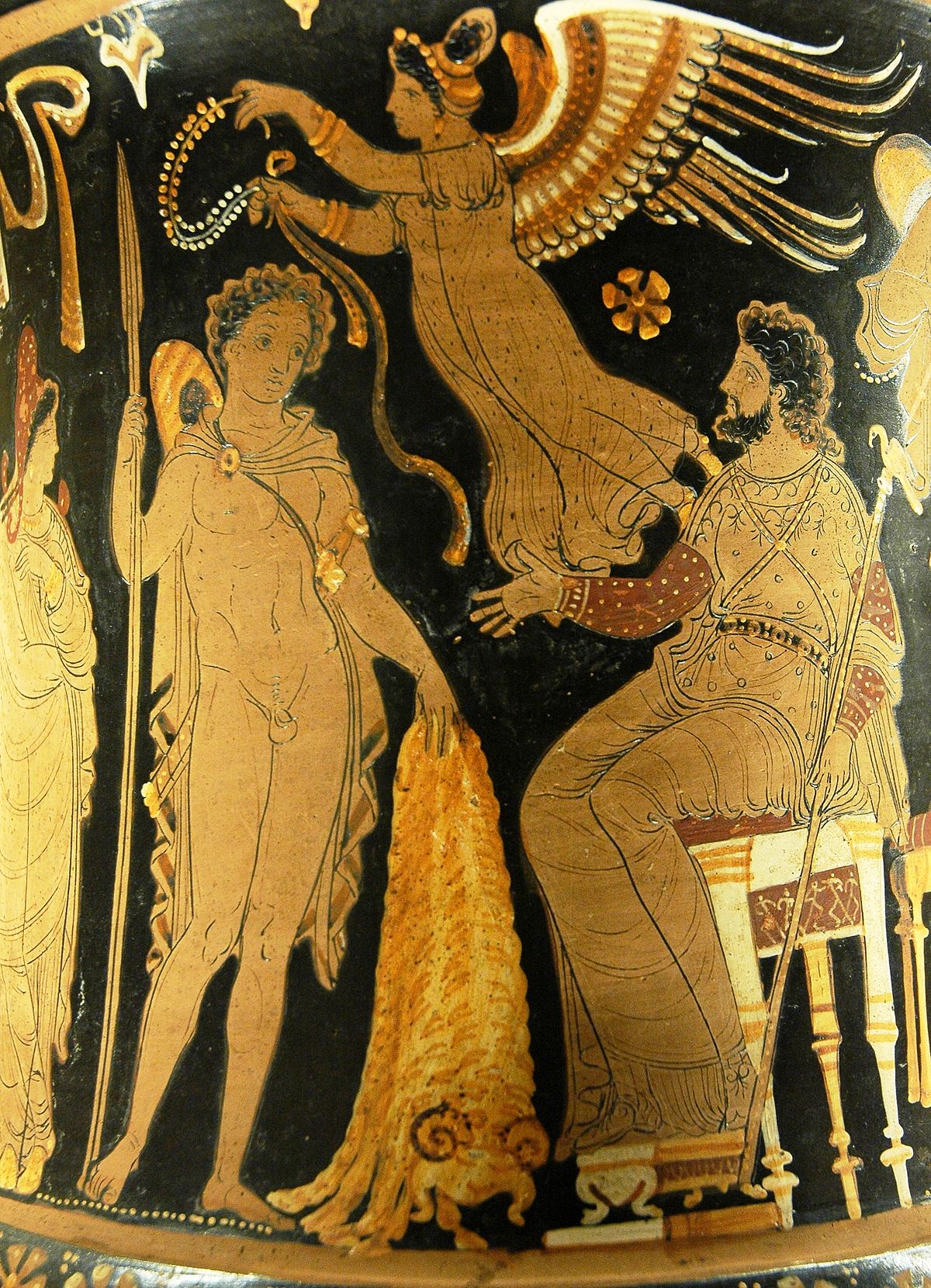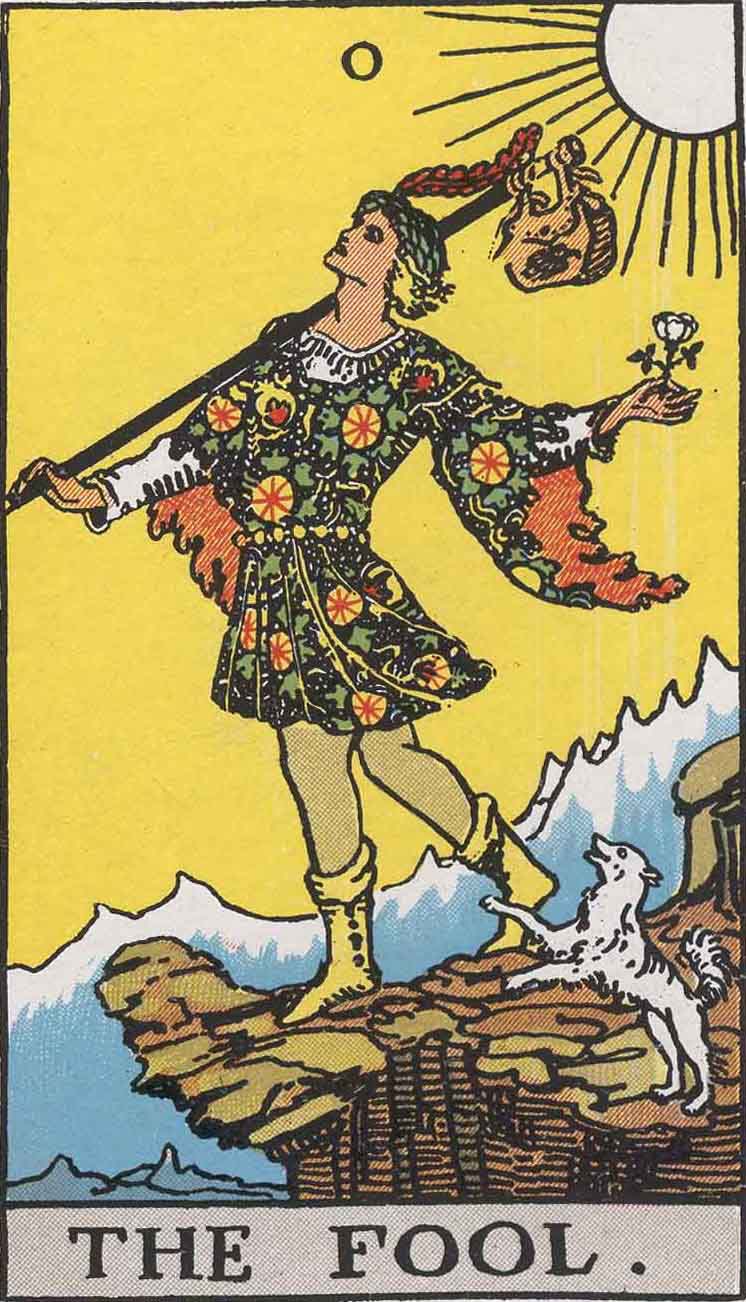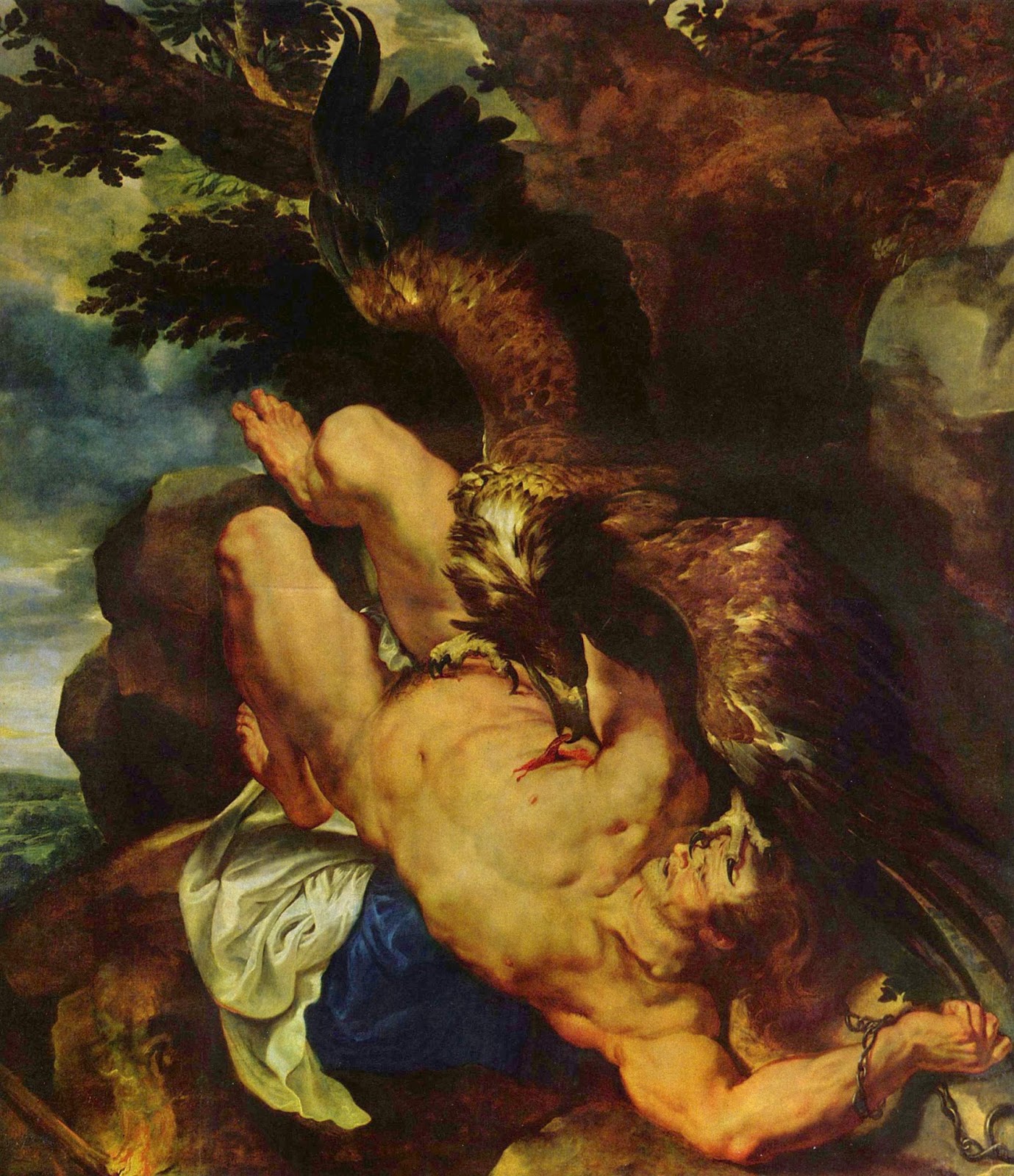
Jason returns with the Golden Fleece, shown on an Apulian red-figure calyx krater, ca. 340–330 BC
The California gold rush began on January 24, 1848 with the accidental discovery of gold in the water during the construction of Sutter’s sawmill. When President Polk announced the discovery later that year, it caused a national and international sensation and the “Forty-Niners” swooped down to begin sifting and panning for gold in the streams and rivers of California.
Gold has been associated with wealth and opulence throughout history. It is especially associated with gods and divinity and royalty. Gold coins protect people from hunger and poverty. Gold coins in the Tarot (Pentacles) deal with earthly, daily experiences related to work and endeavors that support our emotional and physical well-being.
Gold is mentioned in Greek mythology for examples as varied as King Midas, the Golden Fleece stolen by Jason which possessed the power of resurrection, and the Golden Apples of Hesperides. The Golden Apples bestowed immortality on whoever ate them. Gold has always been associated with the eternal, the unending, incorruptible and embracing powers of the divine. The color and shining quality of gold continues to be associated with the sun and the sacred masculine.
There is a fascinating connection between the Golden Fleece and the California gold rush. A widespread interpretation relates the myth of the Golden Fleece to a method of washing gold from streams, which was well attested from c. 5th century BC in the region of Georgia to the east of the Black Sea. (The myths of the Golden Fleece say that the Fleece was kept in Colchis, i.e. the modern Georgia in Eastern Europe.) Sheep fleeces, sometimes stretched over a wood frame, would be submerged in the stream and gold flecks borne down from upstream would collect in them. The fleeces would be hung in trees to dry before the gold was shaken or combed out. Collecting gold flecks from the rivers was what the Forty-Niners would do in California, often using pie pans to swirl the water in and then pour through filters–the same idea as the sheep fleeces.
Gold represents the best in us but also brings out the worst in people. Legends of Aztec and Inca gold drove the Conquistadores to seize the Native American empires. Jealousy and Greed, simmering beneath the surface of our emotions, are brought out into the open when we see someone else has something–such as gold–that we want for ourselves.
Click here to read more about folklore associated with gold.

The Fool, one of the Major Arcana of the Tarot, shows a golden sky that the pilgrim is stepping off into. He trusts that the universe will protect and shield him from exterior evil as well as from his own worst instincts.


